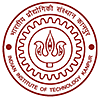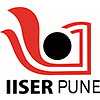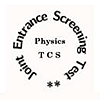B.Sc Astrophysics Syllabus and Subjects

B.Sc Astrophysics syllabus covers the basics of physics and demonstrates its application in astronomy along with the study of stars, galaxies, extrasolar planets, and the interstellar medium. B.Sc Astrophysics subjects consist of concepts based on the physical and chemical properties of celestial bodies.
B.Sc Astrophysics syllabus aims to prepare students for all the important aspects they need to know to build a career in this path. Hence, the job scope of B.Sc Astrophysics is adequate with career options such as Lecture, Assistant scientist, Astrophysicist, Project Analyst, Market Research Associate, etc.
Table of Contents
Semester Wise B.Sc Astrophysics Syllabus
B.Sc Astrophysics syllabus introduces a wide range of concepts based on applied physics and chemistry along with several concepts related to space science. A semester-wise breakup of the B.Sc Astrophysics syllabus is given below:
First-Year B.Sc Astrophysics syllabus
The 1st-Year B.Sc Astrophysics subjects are given below:
|
Semester I |
Semester II |
Mathematics |
Special relativity |
|
Mechanics |
Properties of Matter |
|
Laboratory experiments |
Astrophysics |
|
Oscillation and waves |
Physics of field and matter |
Practical Topics in the 1st-Year B.Sc Astrophysics Subjects
Some of the Practical Topics in the first-year BSc Physics syllabus are given below:
- Study of Plane Diffraction Grating
- Measurement and identification of spectral lines
- Calibration of spectrometer
- Sunspots activity analysis
Second-Year B.Sc Astrophysics syllabus
|
Semester III |
Semester IV |
Modern physics |
Linear algebra and calculus |
|
Dynamics and Vector Calculus |
Practical physics |
|
Quantum mechanics |
Classical mechanics |
|
Cosmology |
Thermal physics |
|
Mathematical Physics |
Nuclear and Particle physics |
Practical Topics in the 2nd-Year B.Sc Astrophysics Subjects
Some of the Practical Topics in the second-year BSc Physics syllabus are given below:
- Measurement of Planck’s constant using LED
- Sunspots activity analysis
- Assignment on Vector analysis
- Problem-solving assignment on Matrices
Third-Year B.Sc Astrophysics syllabus
|
Semester V |
Semester VI |
|
Galaxies |
Quantum mechanics |
|
Dynamics and relativity |
Thermodynamics |
|
Statistics Physics |
Research Methodology |
Practical Topics in the 3rd-Year B.Sc Astrophysics Subjects
Some of the Practical Topics in the third-year BSc Physics syllabus are given below:
- Resolving power of telescope
- To use idea of parallax to determine large distance
- Cardinal Points by Newton’s Method
- Study of polar graph
B.Sc Astrophysics Subjects
B.Sc Astrophysics subjects are centered around the theoretical and practical aspects of astronomy. Students get to study the various application of Quantum Mechanics, Cosmology, Thermodynamics, etc. Some of the B.Sc Astrophysics subjects are given below:
Core Subjects
Below is a list of some core subjects under B.Sc Astrophysics syllabus.
- Physics
- Mathematics
- Special Relativity
- Quantum Mechanics
- Electromagnetism
- Properties of Matter
- Thermal Physics
- Oscillations and Waves
- Thermal Physics
- Cosmology
- Astrophysics
Elective Subjects
Below is a list of some elective subjects under B.Sc Astrophysics syllabus :
B.Sc Astrophysics subjects in Detail
A detailed view of a few subjects in the B.Sc Astrophysics syllabus is given below:
|
B.Sc Astrophysics Subjects |
Topics Covered |
|
Fundamentals of Astronomy |
History of Astronomy and Apparent Luminosity of Stars, Stellar Evolution, The Sun and Planets, Asteroids, Meteors, Comets and Galaxies |
|
Mathematics |
Vector Algebra and Calculus, Curvilinear coordinate systems, Matrices, Differential equations |
|
Introduction to Space Science |
Solar System, Kepler’s Laws, Structure of Earth’s Atmosphere, Fundamental Particles, and basic forces |
|
Experimental Techniques in Astronomy |
The Electromagnetic Spectrum, Tools of the Astronomer, Interferometry, Detectors, and Optical Perspective in minimizing errors |
|
Fundamentals of Astrophysics |
Electromagnetic Radiation, The Hertzsprung-Russell diagram and Nuclear Energy source, X-ray Astronomy, UV Astronomy |
|
Hydrodynamics and Cosmic Electrodynamics |
Hydrodynamics, Electrodynamics and Scattering of Radiations, Principles of Cosmic Electrodynamics, The Sun and Solar Activity |
B.Sc Astrophysics Course Structure
The B.Sc Astrophysics course is well-structured and divided into six semesters comprising core and elective subjects, skill development programs, industry orientation, and practical workshops. The general course structure is given below:
- VI Semesters
- Core and Elective subjects
- Internship
- Project Submission
- Lab Workshops
B.Sc Astrophysics Teaching Methodology and Techniques
B.Sc Astrophysics encompasses different teaching methods apart from the basic traditional lecture-based training. The students are trained in space research labs through group projects and other action-based learning methods. The training methods are given below:
- Practical Sessions
- Group Projects
- Case Methodology
- Workshop
- Lectures
- Tutorials
- Module-specific problem classes
- Peer-to-peer tuition and exam preparation in conjunction with our undergraduate Physics and Mathematics Societies
- Talks by invited speakers
B.Sc in Astrophysics Projects
Astrophysics projects can be taken up on different topics such as astronomy, astrophysics, and astroparticle physics and are required to be submitted by the end of the VI semester. The project motivates the students to develop their skills in designing, developing, and building all sorts of astronomical devices. Popular Astrophysics projects are given below:
- Computational Stellar Evolution
- Distances to the Remnants of Recent Supernova Explosions in the Milky Way
- Exploring the Connection Between Galaxies and Their Central Black Holes
- Fundamental Astronomy of Cataclysmic Binaries
- High Altitude Aerial Platforms for Astronomical Research
B.Sc Astrophysics Reference Books
It is recommended for students to significantly invest in reference books. These books will help students in learning the concepts of Astrophysics. Some of the reference books for B.Sc Astrophysics are given below:
|
Books |
Authors |
|
An Introduction To Astrophysics |
Baidyanath Basu, Tanuka Chattophadayay, Sudhindra Nath Biswas |
|
An Introduction to Astronomy and Astrophysics |
Pankaj Jain |
|
Thermodynamics: An Engineering Approach |
Michael A. Boles and Yungus A. Cengel |
|
Astrophysics: Stars and Galaxies |
K.D. Abhyankar |
|
Engineering Thermodynamics |
PK Nag |
|
Numerical Methods for Engineers |
Steve Chapra |
Top Science Entrance Exams
FAQs on B.Sc Astrophysics Syllabus and Subjects
Q: What is the 1st year syllabus of BSc Astrophysics?
Q: Does Astrophysics need maths?
Q: Is astrophysics a science or math stream?
Q: What are the important books for BSc Astrophysics?
Q: What is the course structure of BSc Astrophysics?








